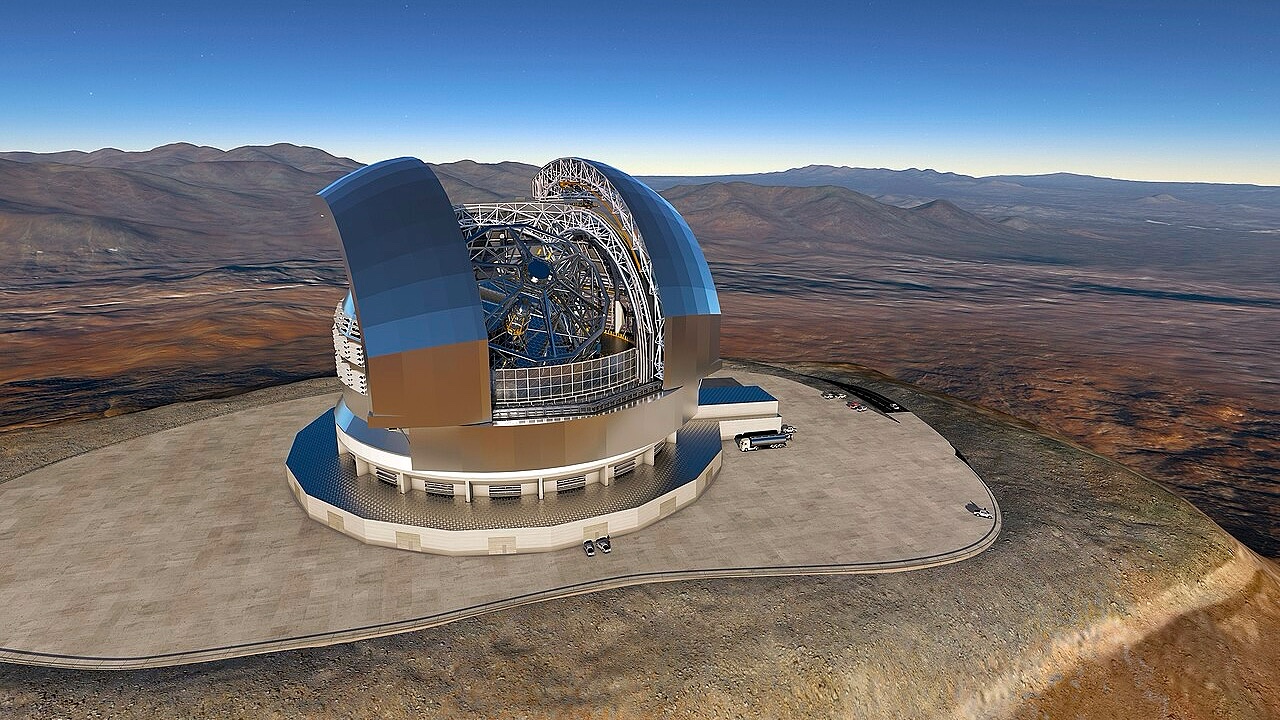
The construction of the world’s largest visible- and infrared-light telescope is making significant strides in the remote Atacama Desert of Chile. Known as the Extremely Large Telescope (ELT), this groundbreaking project by the European Southern Observatory (ESO) aims to revolutionize our understanding of the cosmos. Nestled on Cerro Armazones mountain, the telescope is expected to capture its first celestial views by 2028. *Source: ESO’s March 2024 Construction Update*
Why the ELT is a Big Deal
The ELT’s primary mission is to delve into some of the most fascinating mysteries of space. It will study the atmospheres of exoplanets, search for potential signs of life, and contribute to our understanding of the universe’s expansion. To achieve these ambitious goals, the telescope will rely on an impressive optical system, including a massive primary mirror (M1), measuring 128 feet (39 meters) in diameter and weighing an extraordinary 200 tons.
Recent updates from the ESO highlight progress on the ELT’s dome, central structure, and the base of the M1 mirror. This white lattice framework will support the mirror’s movement during observations, adapting to challenges like gravity shifts, wind, vibrations, and temperature changes. These design features ensure the telescope’s precision and stability, critical for observing distant galaxies and faint stars. *Source: ESO’s Photo of the Week (Feb 2024)*
A Look at the Construction Progress
The construction site is a hub of activity, with constant updates shared through photos, drone footage, and live-streamed webcam views. The ESO recently released images showcasing the telescope’s striking dome and the framework that will eventually house its cutting-edge optical systems. There’s even a time-lapse video capturing the site’s transformation, set against breathtaking sunrises over the desert landscape. *Source: ESO’s Time-Lapse Video (March 2024)*
If all goes as planned, the telescope’s secondary mirror (M2) — a record-breaking 14-foot (4.25-meter) convex mirror — will be completed by 2025. This mirror will reflect light from the M1 mirror to the tertiary mirror (M3), which is scheduled for completion in 2027. Together, these mirrors will create a highly detailed and expansive field of view, enhancing the telescope’s observational power. The structure and dome of the telescope are projected to be finalized by 2026, keeping the project on track for its 2028 debut. *Source: ESO’s 2022 Mirror Production Announcement*
What Lies Ahead
The ELT represents a monumental leap in astronomical research, promising to deliver insights into some of the universe’s most profound questions. By combining innovative engineering with its strategic location in the Atacama Desert’s clear skies, the ELT is poised to become a key tool for astronomers worldwide. Whether it’s identifying Earth-like planets or unraveling the secrets of dark energy, this telescope is set to make history.
Stay tuned for more updates as this awe-inspiring project progresses toward its first light in 2028.